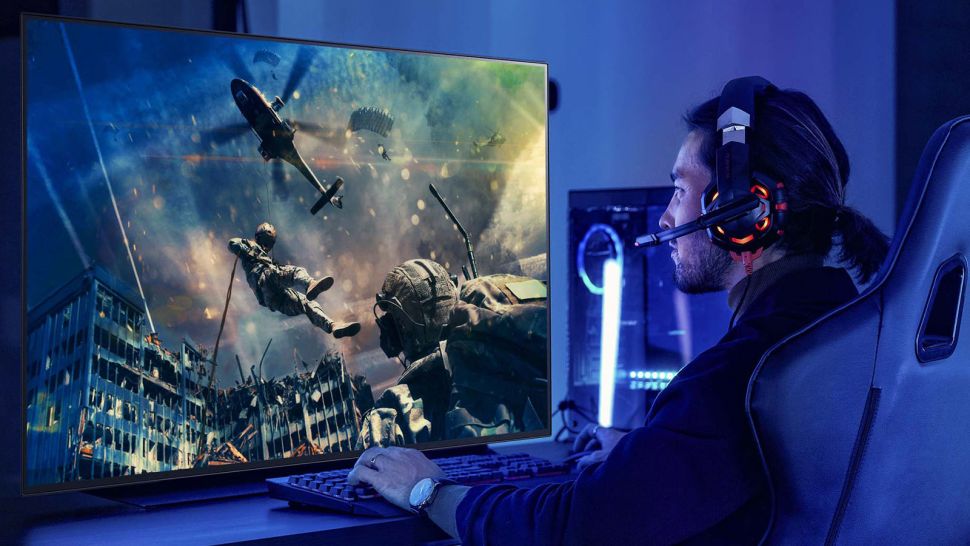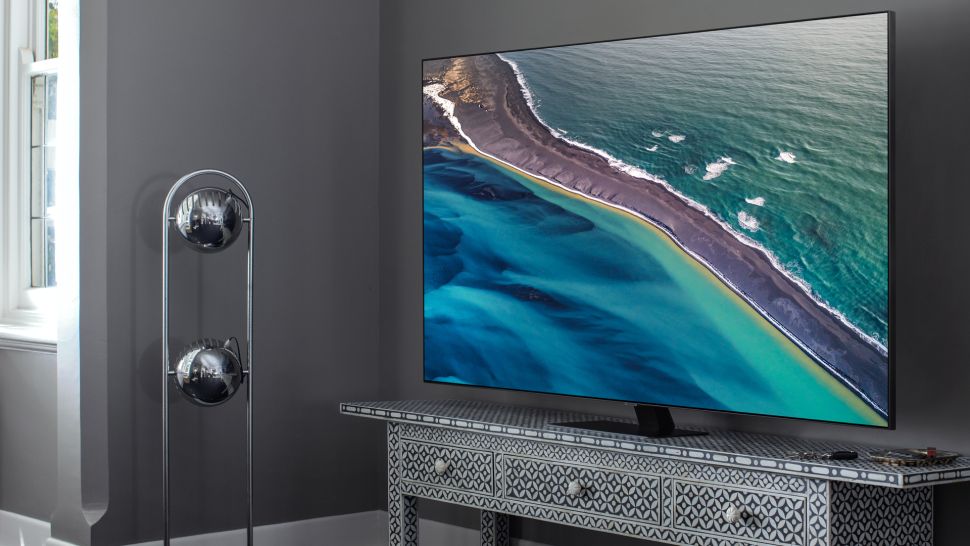What is VRR? Variable Refresh Rate Gaming Features Explained
What is VRR? It’s one of many acronyms floating around TV performance today, however you’ll need to get your head around it to ensure you’re absolutely knowledgeable when shopping for a new TV – particularly when you’re going to be utilizing it to play on an Xbox Series X / Xbox Series S or PS5.
VRR, or ‘variable refresh fee’, because it’s known, is a key feature for getting a clean, artefact-free image when gaming – making certain a clear picture for each offline and aggressive video games.
But how does it work, and the way much does it really make a distinction? You’ll discover all of the solutions in the information below.
What is VRR?
The primary job of VRR is to eliminate screen tearing when playing games. Tearing is a form of visible glitch, the place the picture in your TV shudders mid-frame before carrying on as earlier than. But what is really going on right here?
Screen tearing happens when your TV’s refresh of its picture is out-of-sync with the speed at which your console or PC graphics card delivers frames. You find yourself with an on-screen picture that sees, for instance, the highest half of the display show one body and the underside the subsequent.
This occurs as a result of TVs don’t refresh their complete screen picture instantly. The driver of a show quickly scans down the display, normally from prime to backside, updating the state of every pixel. It simply occurs too quick for our eyes and brains to note, till it causes a visible aberration.
Tearing turns into noticeable when, for example, you employ a 60Hz TV and the sport’s framerate vacillates between 45fps and 60fps. It’s notably apparent in fast-motion video games like first-person shooters. Turn around shortly in-game and the distinction in on-screen data will be massively different from one body to the next.
It’s a jarring look.
VRR eliminates this by syncing the refresh rate of the display to that of the console’s output. You get no extra tearing, with no efficiency hit because the console or PC is the pace-setter, not the display.
VRR over HDMI 2.1
This idea of matching show refresh to rendered frames in nothing new, however the tech levelled up lately and have become far more accessible.
VRR is now a part of the HDMI 2.1 standard – that also helps eARC – and is a characteristic of the next-gen Xbox Series X, Series S and PS5 consoles.
Frame sync is now not only for PC gaming nerds – and VRR helps resolutions as much as 4K and body charges as much as 120fps, which is the present ceiling of what these consoles and the most well-liked TVs can output.
VRR through HDMI 2.1 is an important standardization of the method, as a result of earlier than this we needed to depend on G-Sync and FreeSync as a substitute. They are the proprietary strategies from Nvidia and AMD, and arrived long earlier than HDMI 2.1. While you do get G-Sync on LG OLED TVs, for instance, it’s not as widespread across sensible TVs as VRR.
VRR support: which TVs, graphics cards and consoles have it?
OK, so we already know the newest Sony and Microsoft consoles help VRR. But what else does?
Perhaps surprisingly, the Xbox One S and Xbox One X do too. They use AMD FreeSync, as a result of they have AMD graphics processors, but have additionally been up to date to help VRR over HDMI.
The most tech savvy amongst you may wonder how that’s potential when the Xbox One X and One S are not HDMI 2.1 consoles.
Here’s the place issues get slightly extra complicated. HDMI 2.1 is not a single normal, however a set of applied sciences. It’s slightly like 5G in that respect. Some HDMI 2.zero units help VRR over HDMI, however the decrease bandwidth of HDMI 2.zero means it really works at as much as 60Hz slightly than 120Hz in the Xbox One X.
This HDMI fragmentation is additionally why a number of the newest HDMI 2.1 TVs don’t help VRR: it is not a given simply since you have an HDMI 2.1 socket. It shall be much less of a headache by the tip of 2021, when VRR over HDMI will seemingly develop into an ordinary characteristic of mid-range TVs and better.
But as it’s a patchwork of support right now, here’s an overview of which of the most popular high-end TV and console/GPU series help VRR.
Consoles
- Xbox Series X: HDMI / FreeSync
- Xbox Series S: HDMI / FreeSync
- Xbox One X: HDMI / FreeSync
- Xbox One S: HDMI / FreeSync
- PS5: HDMI
- PS4 Pro: N/A
- PS4: N/A
- Nintendo Switch: N/A
Graphics cards
- Nvidia RTX 3000 series: HDMI / G-Sync
- Nvidia RTX 2000 series: HDMI / G-Sync
- Nvidia GTX 1000 series: G-Sync (using DisplayPort connector only)
- AMD Radeon RX 6000 series: HDMI / FreeSync
- AMD Radeon RX 5000 series: HDMI / FreeSync
- AMD Radeon RX 500 series: FreeSync
TVs
- LG OLED CX/GX range: HDMI / FreeSync Premium / G-Sync
- LG OLED BX range: HDMI / FreeSync Premium / G-Sync
- Sony OLED A8: N/A
- Panasonic HZ2000: N/A
- Panasonic HZ1000: N/A
- Samsung Q90T/Q95T: HDMI / FreeSync Premium
- Samsung Q80T: HDMI / FreeSync
What does this tell us? Top-end Samsung and LG TVs are simply the best around by way of catering for the options of the next-gen consoles.
However, there are some other complicating elements.
Problem one: refresh rate range
Each VRR-capable TV or monitor has a working vary, the number of refresh charges at which it will probably operate whereas using VRR. This is sometimes one thing like 40-120Hz, as within the fantastic LG CX OLED.
This means it will not work for video games that massively prioritize visible high quality over body fee, and purpose for 30fps efficiency. However, there is an answer.
Some VRR shows have a feature known as LFC (low framerate compensation). This makes the display refresh at double the speed of the rendered frames. So they continue to be synced, however the TV works twice as laborious.
It’s vital as a result of whereas the Xbox Series X and PS5 are marketed as ‘120fps’ consoles, 30fps video games will seemingly reside on. Why? By aiming for a decrease body fee, and even perhaps sub-4K decision, developers can use extra of a console’s energy for superior ray tracing lighting, texture or shadow results. They will likely enhance immersion greater than a excessive body fee in slower-paced journey video games.
Problem two: AV receivers
We have bad news. You may must improve your private home cinema receiver when you have a standard encompass sound setup, because it needs to help VRR as well. And except you have a model new receiver, it virtually certainly doesn’t proper now.
Thankfully, there’s a workaround.
You can join your PC or sport console on to your TV, and use either the TV’s optical audio output or an ARC or eARC-enabled HDMI socket to send the audio to your receiver.
ARC and eARC then flip certainly one of your TV’s HDMI inputs into an audio output.
eARC (enhanced audio return channel) is the higher of the two. Its larger bandwidth connection permits for pass-through of very high bit-rate codecs like Dolby TrueHD and DTS-HD.
Wait, what about FreeSync, V-Sync and G-Sync?
To fully perceive why VRR over HDMI 2.1 is particular, it’s a good suggestion to look again to the precursors of this technology. Let’s start with V-Sync, the unique resolution to the picture tearing drawback.
V-Sync flips issues around by making the graphics processor work on the velocity of the show’s refresh fee, which might historically have been 60Hz. The graphics processor times its delivery of frames to match the show’s capacity to attract them.
Tearing is solved, however equally jarring visible points pop up if the renderer velocity can’t match the tempo of the show refresh. You’ll see factors the place the identical body is displayed twice or extra in a row, leading to judder attributable to what is an intermittent halving (or quartering) of the body fee.
This was addressed with Adaptive V-Sync, launched by Nvidia in 2012. It merely switches off V-sync when your frames-per-second rely dips beneath the refresh fee of the monitor.
Neither of methodology was ultimate, resulting in the introduction of Nvidia G-Sync in 2013 and AMD FreeSync in 2015. These are similar to the VRR implementation in HDMI 2.1, making the display alter its behaviour slightly than the PC.
VRR’s OLED problem
Now we’ve given you some concept of the historical past of this tech, we have to pull again to get you a extra technical view on what’s occurring behind the scenes. In some senses VRR, G-Sync and FreeSync don’t really change how a lot the screen behaves as much as you’d think about.
Much of the show’s behaviour is nonetheless decided by its most refresh fee. Let’s take a 120Hz TV for instance.
It can refresh its screen picture 120 instances a second, or as soon as roughly each 8.three milliseconds. Each interval is a window of time wherein the TV can draw a picture, and these stay the identical whatever the refresh fee VRR seeks to emulate.
The show merely waits for the body to be completed and then slots it into certainly one of these 8.3ms home windows.
There’s no main problem right here for LCD TVs, due to how they work. An LCD’s show pixels’ state and the sunshine that illuminates them are considerably independent. LCDs, together with Samsung QLEDs, have LED backlight arrays that sit both behind the pixels or on the sides of the display.
OLED TVs have mild emissive pixels and this appears to have an effect on their efficiency when utilizing VRR. Here are some impressions from oft-TechRadar author John Archer, over at Forbes:
“The largest issue, and one that impacts each 2019 and 2020 LG OLED sets, is that when VRR is activated, the picture undergoes a brightness/gamma shift that makes dark areas in video games look greyer and extra washed out than they do with VRR turned off. I’ve seen this for myself lately on an LG OLED48CX.”
Altering the gamma curve could be a way used to reasonable show brightness and keep away from the flickering VRR could cause in some panel sorts. Oh, and a few LG OLED house owners have complained about VRR-related flickering too.
What does this mean? The excellent OLED TV for VRR gaming hasn’t been made but. But you will be positive it’s in the works.







